A guide to British studio ceramics and pottery
Whether you're scrolling through social media admiring photos of people's collections or flicking through interiors magazines filled with inspiration, you've probably come across Studio Pottery. Beautifully designed with individuality and an abundance of character, these ceramics have become increasingly popular in recent years, and are, unsurprisingly, much sought-after by collectors.
Unlike some areas of collecting, British Studio Pottery is incredibly accessible, whether you're an experienced collector and a newbie to the collecting world, and often a more affordable field.
Check out our antiques ceramics guide for more collectable ceramics and porcelain.
What is British Studio Pottery?
Studio pottery is pottery made by an individual artist (or sometimes small groups), both professional and amateur, who carries out all stages of creating the pottery themselves. The pieces are usually quite unique and are made in small batches. Studio Pottery typically focuses on more functional ceramic items such as tableware, dinnerware and useful pots, however there has been a surge in artists creating more decorative pieces.
How do you identify British Studio Ceramics?
To identify studio pottery ceramics, look out for makers' marks on the pieces. Most commonly, the marks will depict the studio and the artists signature, however in cases where a couple of artisans have contributed to the pottery, there may be more than one artist's signature.
How much does British Studio Pottery cost?
Studio ceramics are more affordable than paintings, prints or sculptures by artists of equal stature. ‘You can buy pottery by the biggest names of the 20th century for a couple of hundred pounds at auction and can start to build quite a serious collection fairly quickly,’ says Marijke Varrall-Jones, director of Maak, the London auction house that specialises in British studio ceramics. Studio ceramics can cost below £100, but pieces by some of the most famous names in the sector can reach much higher price points.
Who are the key artists of Studio Pottery?
Bernard Leach
The studio pottery movement is a peculiarly British affair that was ignited by one man more than any other, Bernard Leach. Born in Hong Kong in 1887, raised in Japan and Singapore, and educated in England, Leach was a talented artist and studied etching at the London School of Art, returning to Japan to immerse himself in the world of pottery. In 1920, Leach was invited to set up a pottery in St Ives, Cornwall, as part of a Guild of Handicrafts initiative in the town. He never left and continued potting there until 1972, when failing eyesight prompted his retirement.
‘Leach was a very strong character, a pioneer,’ remembers the honorary lead potter at the still-thriving Leach Pottery, John Bedding, who was an apprentice under Leach in the early 1970s. ‘He derived enormous pleasure from pottery and produced a high-quality alternative to the industrial-scale factory wares that he regarded as sterile and soulless. He wanted people to notice the irregularities of handcrafted pieces and to appreciate the marks of the maker’s hand.’
Independent ceramics consultant Ben Williams agrees. ‘Leach’s work was a celebration of the “anonymous craftsman” and over his long career he was inspired by slipware from England, salt glaze from Germany, celadon from Korea, Sung ware from China, and many types of Japanese pottery,’ he says. ‘Leach worked in earthenware, raku, stoneware and porcelain. There’s nobody who had a range as diverse as he did.’
In the early days, Leach was assisted by his friend the Japanese potter Shōji Hamada. They took a holistic approach, building their own wood-fired kiln, digging local clay for potting, and making fine wood ash reduction glazes from local timber. Soon their rustic-looking wares were garnering both British and Japanese fans. From the outset, Leach wanted to improve the standards of ceramic training and took on apprentices for two-year periods. These are collectively known as ‘Leach potters’ and pieces by them can be picked up today from the low hundreds of pounds.
Today, Bernard Leach’s most valuable pieces are his early slipware dishes of the 1920s and 30s, which fetch from £10,000 to £30,000. While they rarely come up for sale, Leach estimated that he made 100,000 pots over his lifetime, so there are plenty more available. All standard-wares (for this, read bread-and-butter tableware sold through outlets such as Heal’s and Liberty) designed by Leach and made at the Leach Pottery carry the ‘SI’ impressed mark (indicating ‘St Ives’). But some also carry a ‘BL’ impressed or painted mark, which means that Leach himself made or decorated the ceramic. While a simple ‘SI’-marked soup tureen could cost £40 at auction, an example that also carries the ‘BL’ mark might reach £1,200, according to Varrall-Jones.
Lucie Rie
While Leach was the leading light in studio pottery before the Second World War and into the 1950s and 60s, his good friend, the émigré Austrian potter Lucie Rie, in creative partnership with the German ceramicist Hans Coper, gradually took on the mantle in the post-war period. Based in London from 1938, Rie couldn’t be more different from Leach in her style, offering a fashionable alternative to Leach’s ‘brown pots’, as they became known. Without painted decoration, Rie’s ceramics were urban and modernist in design, with a simplicity of line. Good examples of this were her footed bowls and trumpet bottles, which attracted many admiring glances at the Festival of Britain in 1951, where she exhibited.
‘You don’t need to know anything about pots to see that Rie’s ceramics are beautiful,’ says Varrall-Jones. Her iconic stoneware crockery sets – plates, cereal bowls, serving bowls, cups and saucers, and coffee pots, made from the 1950s onwards – consisted of white tin-glaze inner surfaces, with a matt conker-brown glaze on outer surfaces, decorated with a network of sgraffito lines applied with a needle. The sgraffito bowls, along with the coloured slip inlay bowls, are so popular today that they can command higher prices than Rie’s standalone footed porcelain bowls, and fetch between £30,000 and £50,000. Rie also pushed the boundaries by using fabulously bright glazes – uranium yellow, copper greens and pinks, a peacock-blue – decorated with rims of ‘volcanic’ manganese and copper glaze that bubbled and dripped like a lava flow.
Hans Coper
In contrast to this, Coper’s own highly distinctive style was influenced by Cycladic art dating from the Bronze Age, which he had seen at the British Museum in London. He created sculptural forms by throwing clay into shapes then joining two or more pieces together. His glazes were always black and/or white. ‘While Rie was prolific, rarely destroying any pots, Coper was the opposite, putting a hammer through much of it,’ says Williams. Consequently, any Coper pots that come up for sale can fetch as much as £50,000.
Like Leach down in Cornwall, both Rie and Coper passed their skills on through teaching at the Camberwell School of Art and the Royal College of Art. Rie’s students included Ewen Henderson and Coper’s included Elizabeth Fritsch and Jacqueline Poncelet – all highly collectable potters now.
Edmund de Waal
A British ceramicist known for his large pottery installations and his distinct porcelain and ceramics with a celadon glaze. The unique style of his early pieces can be identified thanks to his creations taking the form of classic shapes and styles with the addition of indentations, pinches and subtle modifications to create something completely new, and at the time, never seen before. His pieces are most often in shades of white, and on rare occasions he would make limited addition pieces in black.
Later in his career, he began to stray from his classic, more domestic-style pottery pieces and delved into the idea of large-scale vessels, varying from groups of ceramics to incorporating different materials, including metal to writing embossed into his creations for a completely different take on traditional Studio Pottery.
Studio Pottery pieces by de Waal fetch high prices at auction. At a recent Sotheby's auction, a large lidded jar c1996 had an estimate of £5,000 - £8,000, and a tall dimpled porcelain lidded vase c1993 was estimated to sell for £6,000 - £8,000 at a Gorringes auction.
Where to see British Studio Ceramics
Centre of Ceramic Art at York Art Gallery, Exhibition Square, York, YO1 7EW. 01904 687687; yorkartgallery.org.uk/exhibition/centre-of-ceramic-art-coca
Ceramic Gallery at Aberystwyth Arts Centre, Aberystwyth University, Penglais Campus, Aberystwyth, Ceredigion, SY23 3DE. 01970 622882; aberystwythartscentre.co.uk
Leach Pottery Studio & Museum, Higher Stennack, St Ives, Cornwall, TR26 2HE. 01736 799703; leachpottery.com
Lisa Sainsbury Ceramics Collection at Sainsbury Centre for Visual Arts, University of East Anglia, Norwich, NR4 7TJ. 01603 593199; scva.ac.uk
Victoria and Albert Museum, Cromwell Road, London, SW7 2RL. 020 7942 2000; vam.ac.uk
Books about British Studio Ceramics
British Studio Ceramics by Paul Rice (The Crowood Press)
- Buy it now from Waterstones (£29.95)

British Studio Pottery: The Victoria and Albert Museum Collection by Oliver Watson (Phaidon)
- Buy it now from Etsy (£45.08)
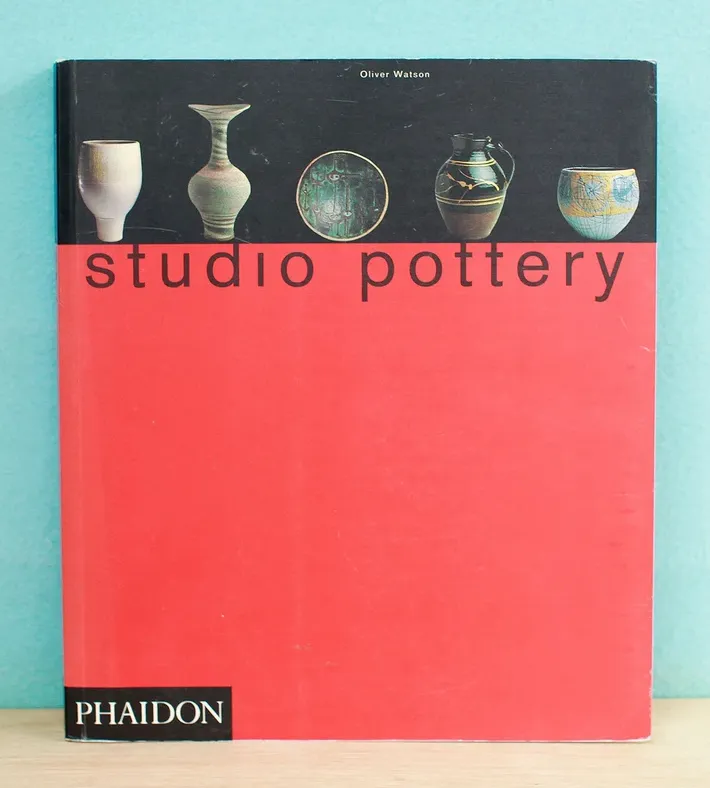
The Crafts in Britain in the 20th Century by Tanya Harrod (Yale University Press)
- Buy it now from Waterstones (£55)

Modern Pots: Hans Coper, Lucie Rie and Their Contemporaries by Cyril Frankel (University of East Anglia)
- Buy it now from eBay (£169.33)

British Studio Ceramics auctions
- Christie’s
- Fieldings
- Maak Contemporary Ceramics
- Phillips de Pury & Co
- Sotheby’s
Galleries showing British Studio Ceramics
- Erskine, Hall & Coe
- Joanna Bird
- Oxford Ceramics Gallery
How to display your British Studio Pottery collection
Collate different shapes and sizes

To show off a studio pottery collection to maximum effect, combine different shapes and styles that work together tonally against a plain background.
Experiment with different textures
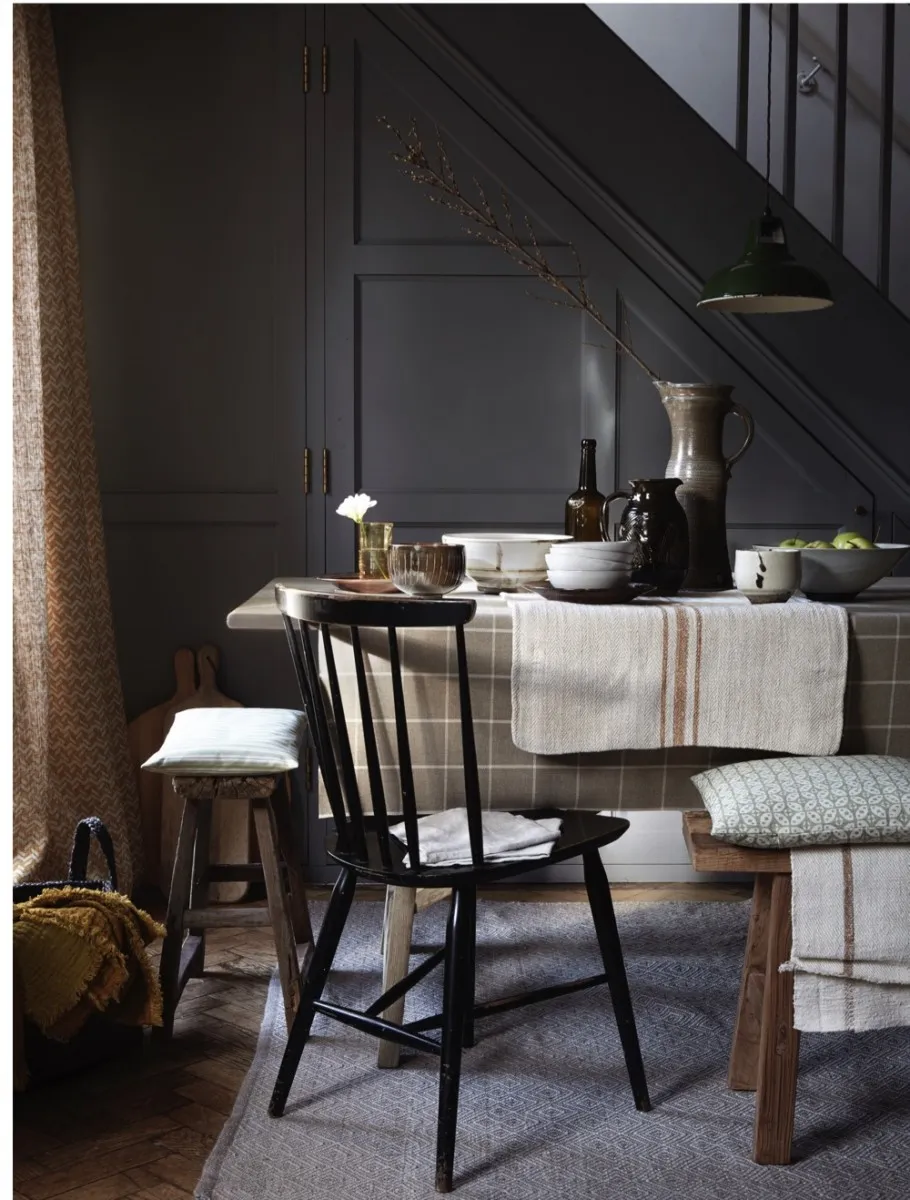
Use rough linens and reclaimed wood to contrast with smooth ceramic surfaces on a dining table.
Choose a colour palette
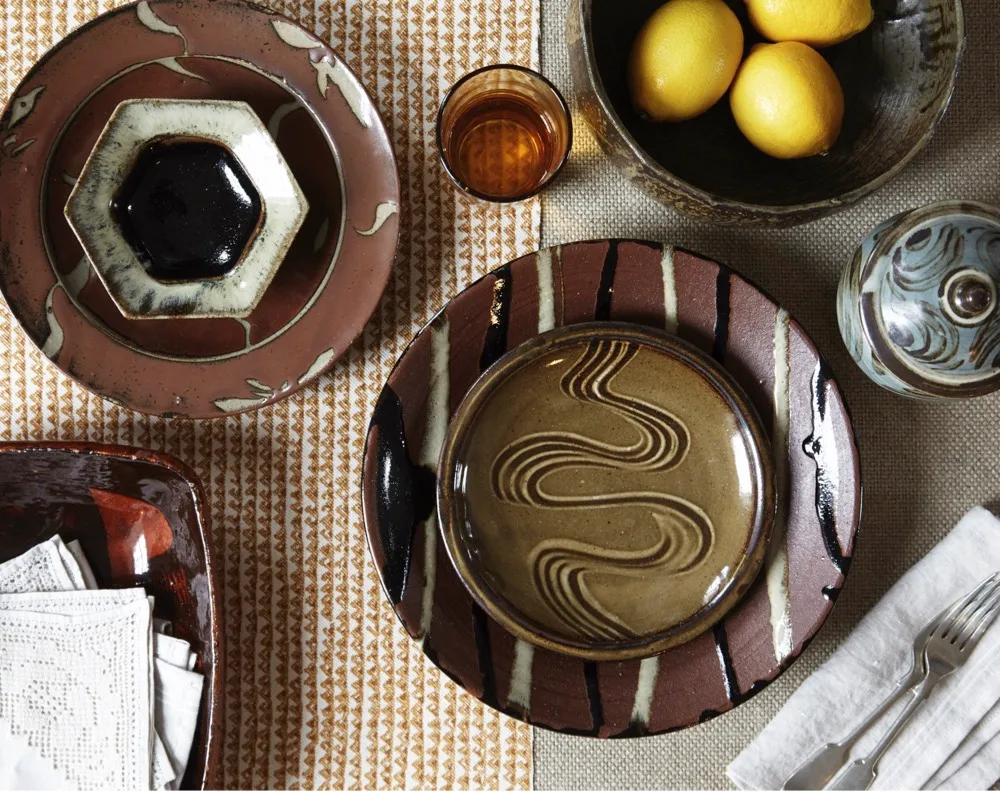
The earthy colours and painterly glazes of studio ceramics combine to create a rich table collection.
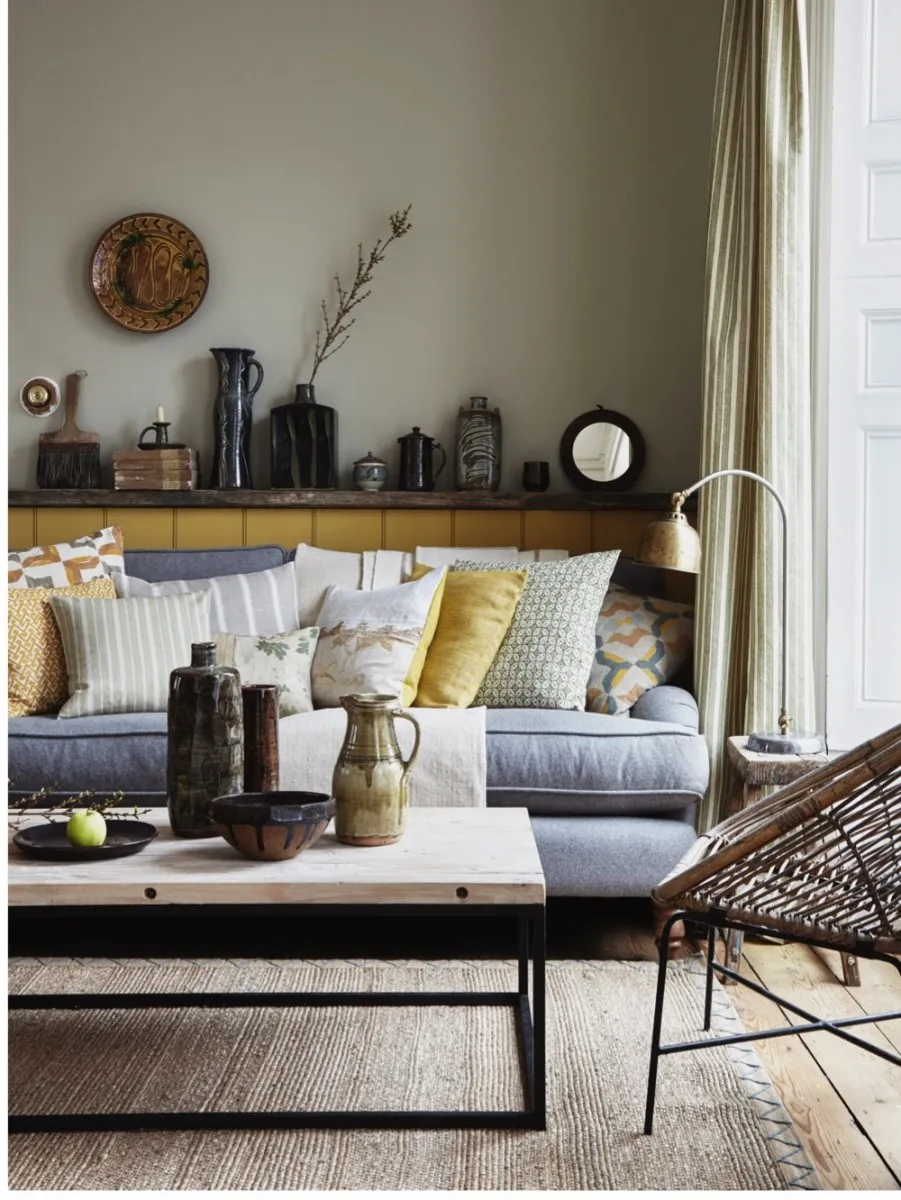
Equally, warm hues of mustard yellow and antique oak combine with cool stone grey pots to create a soothing and relaxed space
Mix and match different Studio Pottery pieces

Mix and match studio pottery for a relaxed look. A varied collection is easy to add to and doesn't feel too precious for everyday use.
Add Studio Pottery as decoration in functional spaces
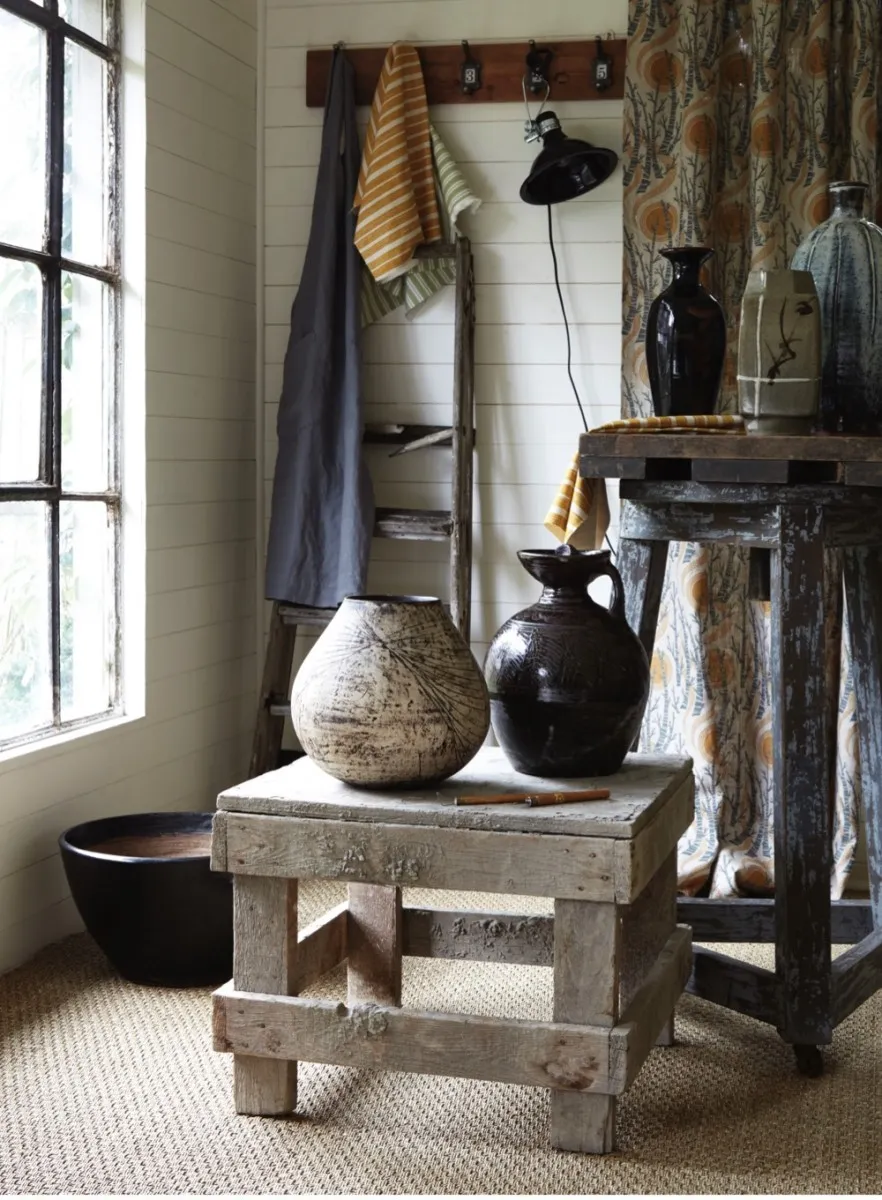
Take inspiration from the chalky white backdrops of potters' studios with natural textures and rustic furniture that echo the patterns and tones of the ceramics.
